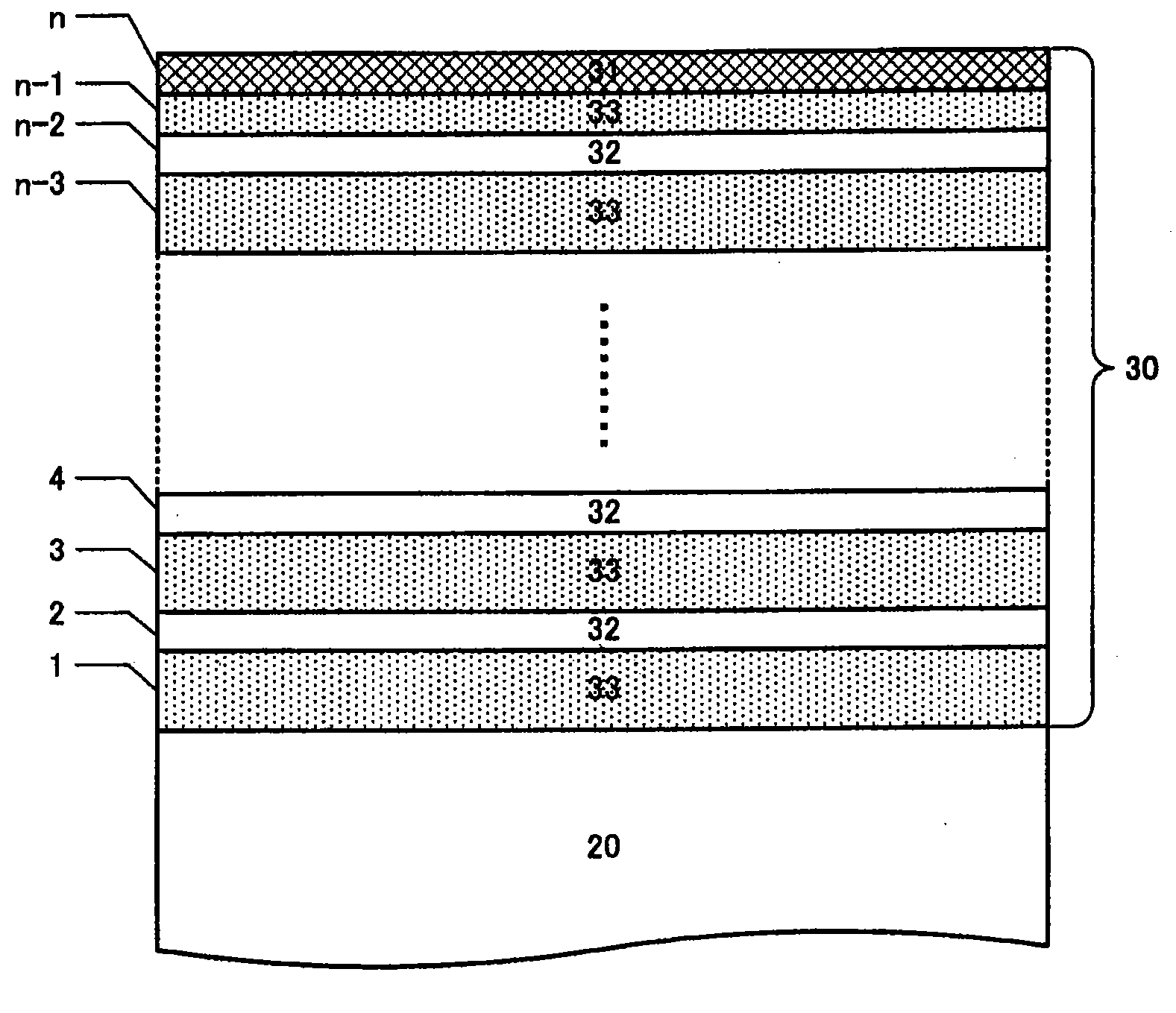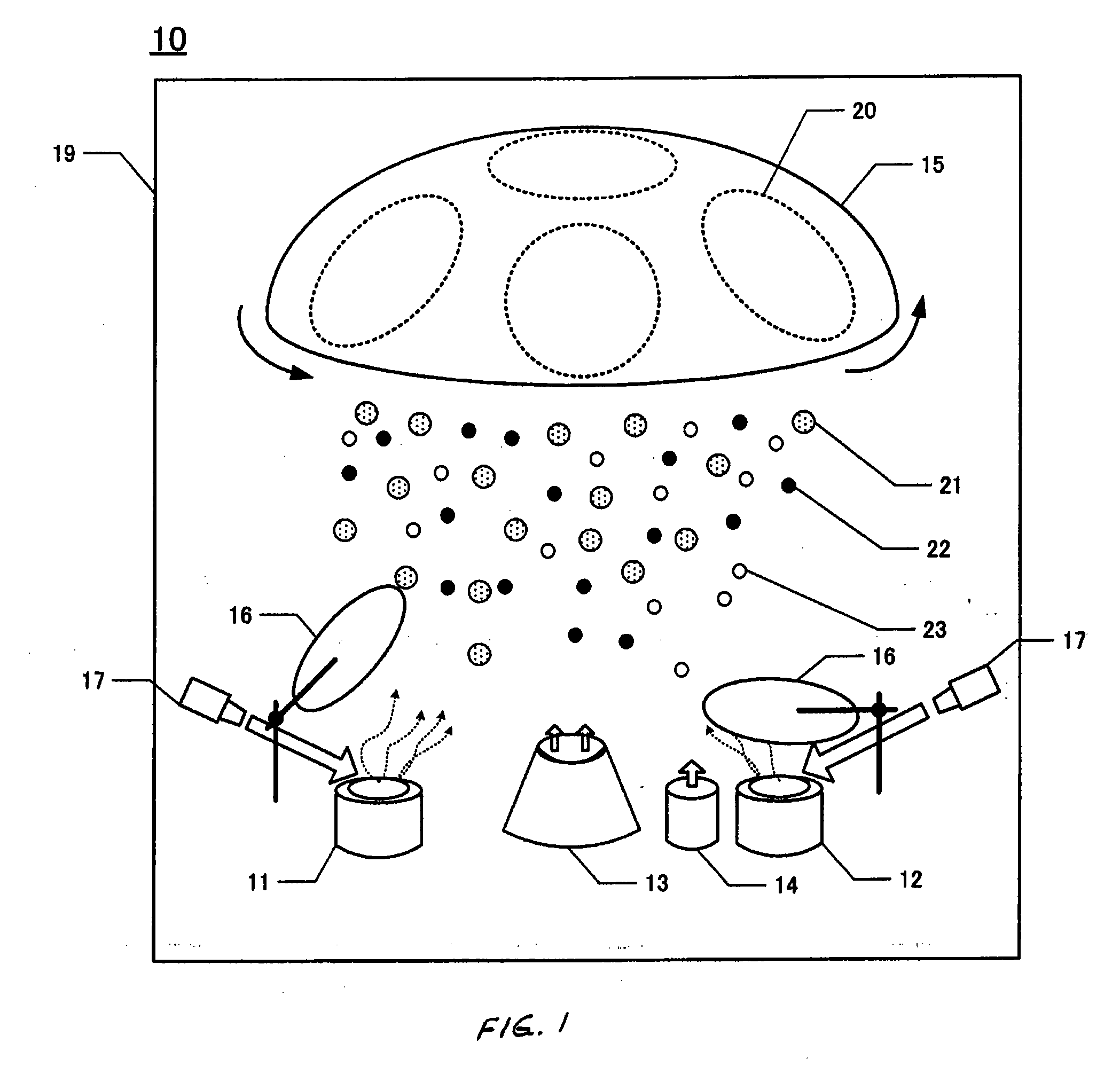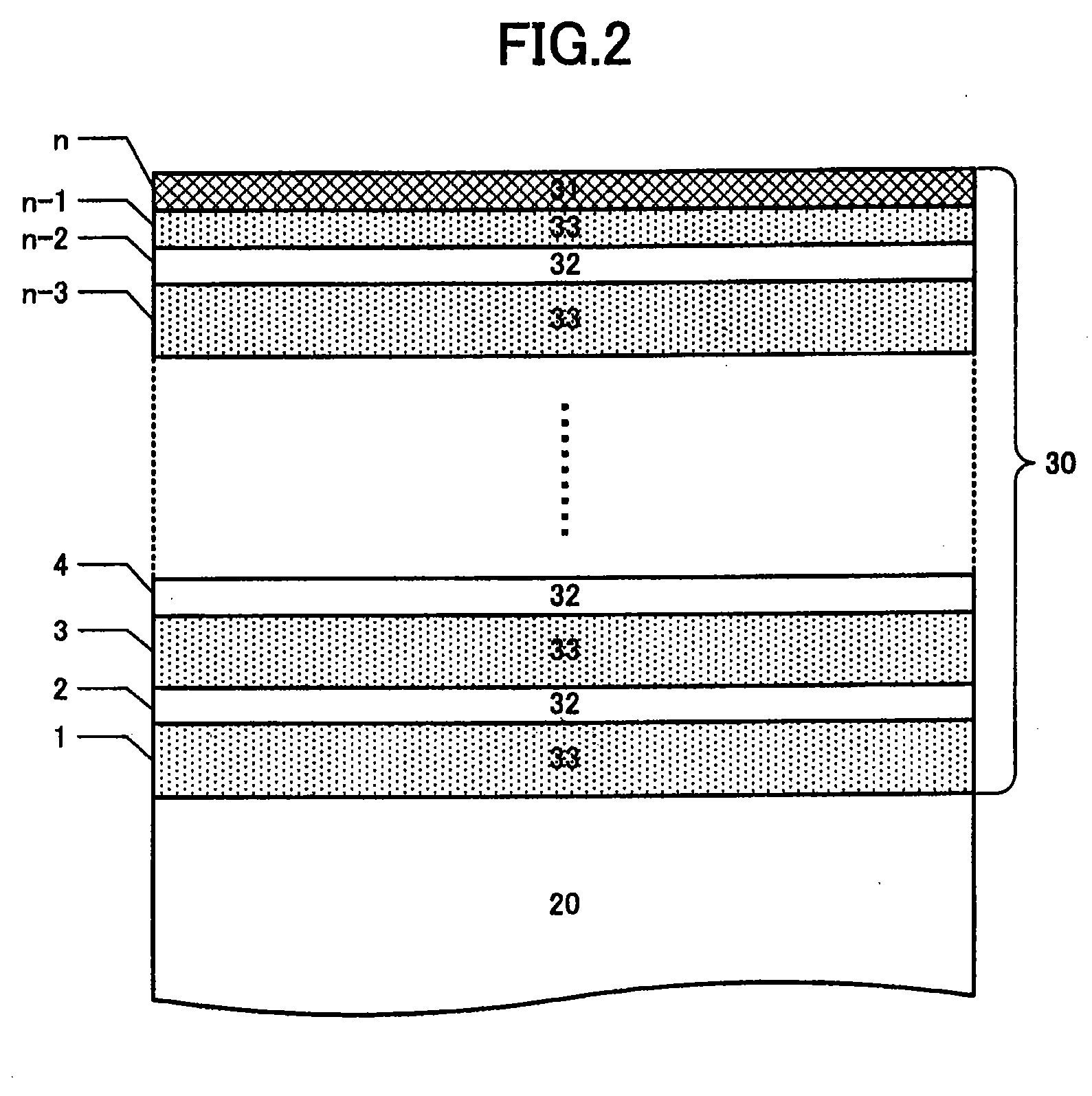Optical multilayer thin-film filters and methods for manufacturing same
a thin-film filter and optical multi-layer technology, applied in the field of multi-layer film optical filters, can solve the problems of adding unwanted color to the detected image, difficult to remove the dust from the filter, and contaminating the interior of the deposited multi-layer film layer, etc., to achieve the effect of eliminating static and high conductivity
- Summary
- Abstract
- Description
- Claims
- Application Information
AI Technical Summary
Benefits of technology
Problems solved by technology
Method used
Image
Examples
embodiment 2
[0043]In this embodiment, the optical multilayer-film filter 30 of Embodiment 1 is utilized in an imaging module 100 of a digital still camera. FIG. 5 is an optical diagram of the imaging module 100. The imaging module 100 comprises a quartz crystal substrate 20 of an optical low-pass filter (OLPF). On the front surface of the optical low-pass filter 20 is the OMTFF 30. Downstream is a solid-state image sensor, such as a CCD sensor or CMOS sensor. A driver 50 provides power and driving signals to the solid-state image sensor 40.
[0044]Incident light 70 enters the imaging module 100 through a lens 60. The infrared radiation of the entering light is removed by the OMTFF as the filter transmits visible light and reflects the infrared light. By passage through the crystal substrate 20, which serves as an OLPF, high-frequency components of the light that otherwise would cause moiré patterns are removed. The resulting processed incident light is received and converted to electrical signals...
PUM
| Property | Measurement | Unit |
|---|---|---|
| depth | aaaaa | aaaaa |
| transmission wavelength | aaaaa | aaaaa |
| atomic weight | aaaaa | aaaaa |
Abstract
Description
Claims
Application Information
 Login to View More
Login to View More - R&D
- Intellectual Property
- Life Sciences
- Materials
- Tech Scout
- Unparalleled Data Quality
- Higher Quality Content
- 60% Fewer Hallucinations
Browse by: Latest US Patents, China's latest patents, Technical Efficacy Thesaurus, Application Domain, Technology Topic, Popular Technical Reports.
© 2025 PatSnap. All rights reserved.Legal|Privacy policy|Modern Slavery Act Transparency Statement|Sitemap|About US| Contact US: help@patsnap.com



